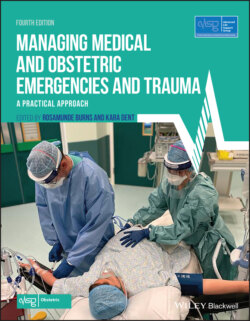Читать книгу Managing Medical and Obstetric Emergencies and Trauma - Группа авторов - Страница 33
2.5 Direct deaths Hypertensive disease
ОглавлениеThe number of deaths from pre‐eclampsia is a fraction of what it was in 1952–1954 (Table 2.3) and most recently has fallen dramatically from 19 in 2006–2008 to 10 deaths in 2009–2011, nine deaths in 2010–2012 and then six deaths in 2014–2016. This reduction is largely due to the introduction of guidelines on fluid management and none of the recent deaths have been due to pulmonary or cerebral oedema. However, there is a continuing problem with failure to control systolic hypertension, and preventing intracranial haemorrhage remains a challenge. Among the recent recommendations the following points are emphasised:
Epigastric pain in the second half of pregnancy should be considered to be the result of pre‐eclampsia until proved otherwise
Keep blood pressure (BP) below 150/100, and very high systolic BP is a medical emergency with urgent treatment needed
Neuroimaging should be performed if a woman with hypertension or pre‐eclampsia has focal neurology, severe or atypical headache or incomplete recovery from a seizure
Stabilising the mother including controlling her BP is vital prior to intubation
New‐onset hypertension or proteinuria needs prompt referral with clear communication between health professionals
Table 2.3 The changes in direct deaths reported to the CEMDs, 1952–2018
| Cause | 1952–1954 (England+Wales) | 2006–2008 (UK) | 2009–2011 (UK and Ireland) | 2010–2012 | 2014–2016 | 2016–2018 |
|---|---|---|---|---|---|---|
| Hypertensive disease | 246 | 19 | 10 | 9 | 6 | 4 |
| Obstetric injury | 197 | 0 | 7 | 7 | 1 | 4 |
| Haemorrhage | 188 | 8 | 14 | 11 | 17 | 10 |
| Early pregnancy/abortion | 153 | 0 | – | 7 | 3 | 7 |
| Thromboembolism | 138 | 18 | 30 | 26 | 32 | 33 |
| Anaesthesia | 49 | 7 | 3 | 4 | 1 | 1 |
| Genital tract sepsis | 42 | 26 | 15 | 12 | 11* | 12* |
* Now reported as pregnancy‐related sepsis, so now includes urinary tract infections.
Some of these recommendations are directed at non‐obstetricians, and, unfortunately, maternity staff do not always recognise the need for effective control of BP.
